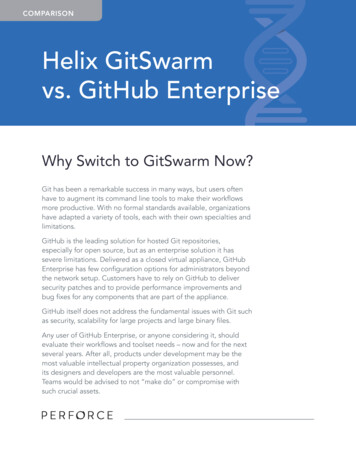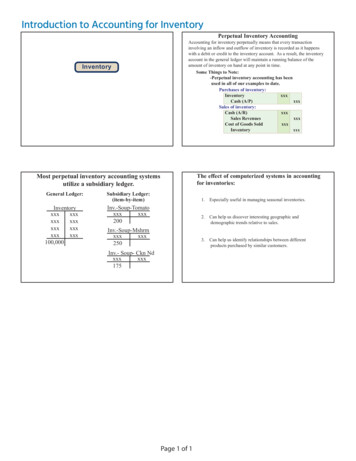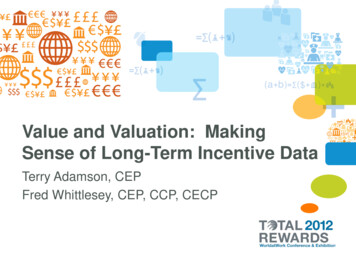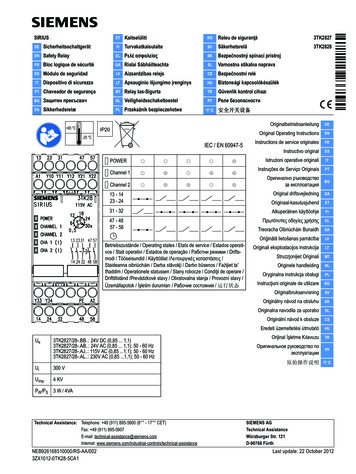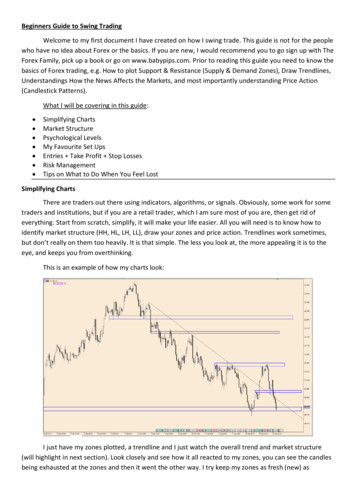
Transcription
000 FrontMatter DH Double Helix 9/17/12 10:12 AM Page is
000 FrontMatter DH Double Helix 9/17/12 10:12 AM Page iiCambridge city center, early 1950s. Detail of a map published by W. Heffer & Sons.
000 FrontMatter DH Double Helix 9/17/12 10:12 AM Page iiiJAMES D. WATSONTHE ANNOTATED AND ILLUSTRATEDDOUBLE HELIXEdited byAlexander Gann & Jan WitkowskiSIMON & SCHUSTERNew YorkLondonTorontoSydneyNew Delhi
000 FrontMatter DH Double Helix 9/27/12 3:59 PM Page ivsSimon & Schuster1230 Avenue of the AmericasNew York, NY 10020Copyright 1968 by James D. WatsonCopyright renewed 1996 by James D. WatsonNew annotations, illustrations, and appendixes Copyright 2012 byCold Spring Harbor Laboratory Press, Cold Spring Harbor, New York.All rights reserved, including the right to reproduce this book orportions thereof in any form whatsoever. For information addressSimon & Schuster Subsidiary Rights Department,1230 Avenue of the Americas, New York, NY 10020First Simon & Schuster hardcover edition November 2012SIMON & SCHUSTER and colophon are registeredtrademarks of Simon & Schuster, Inc.For information about special discounts for bulk purchases,please contact Simon & Schuster Special Sales at1-866-506-1949 or business@simonandschuster.com.The Simon & Schuster Speakers Bureau can bring authorsto your live event. For more information or to book an event,contact the Simon & Schuster Speakers Bureau at1-866-248-3049 or visit our website at www.simonspeakers.com.Designed by Denise WeissManufactured in the United States of America10987654321Library of Congress Cataloging-in-Publication DataWatson, James D., date.The annotated and illustrated double helix / James D. Watson ; edited by Alexander Gann &Jan Witkowski. — 1st Simon & Schuster hardcover ed.p.cm.Includes bibliographical references and index.I. Gann, Alexander. II. Witkowski, J. A. (Jan Anthony), date. III. Watson, James D., date.Double helix. IV. Title.[DNLM: 1. Watson, James D., date. 2. DNA. 3. Genetic Code. 4. Molecular Biology.QU 58.5]572.8'6––dc232012037483ISBN 978-1-4767-1549-0ISBN 978-1-4767-1551-3 (ebook)Portions of this book were first published in Atlantic Monthly.
000 FrontMatter DH Double Helix 9/17/12 10:12 AM Page vFor Naomi Mitchison
000 FrontMatter DH Double Helix 9/17/12 10:12 AM Page vi
000 FrontMatter DH Double Helix 9/17/12 10:12 AM Page viiContentsPreface to Annotated and Illustrated EditionSir Lawrence Bragg’s Foreword to the Original EditionPreface to the Original EditionixxiiixvPrologue from the Original Edition1Chapters 1–293Epilogue from the Original Edition239The Nobel Prize241Appendix 1: The First Letters Describing the DNA Model257Appendix 2: The Lost Chapter from The Double Helix269Appendix 3: Watson and the Merck Fellowship Board273Appendix 4: Writing and Publishing The Double Helix283Appendix 5: Chargaff’s Review and the Ensuing rces317Photo Credits333Index337vii
000 FrontMatter DH Double Helix 9/17/12 10:12 AM Page viii
000 FrontMatter DH Double Helix 9/17/12 10:12 AM Page ixPreface to Annotated and Illustrated EditionIn Cold Spring Harbor’s Blackford Bar, one evening in June 2010, SydneyBrenner suggested looking through the papers he had recently donated tothe Cold Spring Harbor Laboratory Archives. Among his own papers were,he knew, some of Francis Crick’s correspondence that had become muddledin with his during the 20 years they had shared an office in Cambridge. A fewdays later we discovered that the trove included letters to and from Crickwritten during the period when he and Jim Watson at Cambridge, and Maurice Wilkins and Rosalind Franklin in London, were searching for the structure of DNA.Mislaid some 50 years earlier (“thrown out by an over efficient secretary,” Crick believed), these letters had escaped the attention of the historiansof molecular biology who first started looking into this new field in the mid1960s. The letters provided some new insights into the proceedings, and inparticular the personal relationships of the protagonists in the DNA story.The most celebrated account of that story is The Double Helix, Watson’snovelistic version of the events as they appeared to a 23-year-old Americanin Cambridge in the early 1950s. Written not in the tone of a formal autobiography nor in the measured language of the historian, his racy and thrillerlike telling was reviled by some and praised by many upon publication in1968.In writing our article on the lost Crick correspondence, we naturally reread The Double Helix. We were struck by how Watson’s account in the bookaccurately represented the vivid, contemporary descriptions of people andevents found in the letters, and not just those of Crick and Wilkins, but Watson’s own. The social whirl of parties, tennis, French lessons, holidays, andother events that featured prominently in the book—the “gossip,” as Crickcharacterized it—were recorded in the weekly letters Watson wrote to hisix
000 FrontMatter DH Double Helix 9/17/12 10:12 AM Page xxTHE DOUBLE HELIXsister Elizabeth during his time in Cambridge. And the science covered in thebook was also discussed in contemporary letters to Max Delbrück and otherfriends, and not just the DNA work, but Watson’s research on bacterial genetics and tobacco mosaic virus, projects that figure prominently in the story.In all of this contemporary correspondence, the character of Watson himself—the brash, self-confident yet at times also self-deprecating, young manportrayed in his book—was transparent. We became intrigued to see all thecontemporary accounts we could find—not just those revealed in the lettersof Watson, Crick, and Wilkins, but of Franklin, Linus Pauling, and others aswell.We also noticed just how many other characters appear in The DoubleHelix—many unrelated to the central scientific story. Watson, eager to keepthe narrative moving, often provides only the briefest of information, sometimes not even identifying the most intriguing of minor characters. We don’tget to learn the interesting story of the “local doctor” who had rowing oarsmounted on the wall of his surgery, or the identity of the “antiquarian architect” who kept his house free of gas and electricity—or anything much aboutBertrand Fourcade except that he was the “most beautiful male” in Cambridge. And what was the novel of ill-judged sexual indiscretions of Cambridge dons that Watson reads at one point in the story? We wanted to know.And so the idea of an annotated edition of The Double Helix took shape,a version in which an array of viewpoints and voices would be added as commentary, together with background information and illustrations to enrichthe text. The current volume is the result. In addition to the numerous photographs (a number being published for the first time), we have reproducedmany letters and other documents in full or in part as facsimiles. One of thepleasures of visiting archives is to see and handle original documents andwhile we cannot match that experience, we hope that readers will enjoy seeing letters and manuscripts as their original recipients saw them.The sources of material used in our annotations are many, both publishedand unpublished. Of the former, we used many books—including the histories and biographies of the field. These are listed in the bibliography at the
000 FrontMatter DH Double Helix 9/17/12 10:12 AM Page xiP R E FAC E TO A N N OTAT E D A N D I L L U ST R AT E D E D I T I O Nend of the book. Among unpublished sources, Watson’s letters to his sisterand also his parents are a major source of information about his Cambridgelife and have not been used before, except by Watson, while his letters toDelbrück, Luria, and others provide scientific content. In addition to Watson’s papers, we have drawn on those of Crick, Wilkins, Pauling, andFranklin among others. We have also included reminiscences written by RayGosling specially for this edition. Gosling worked with both Wilkins andFranklin in those years and actually took the most famous and influentialdiffraction pictures of DNA. The source for each annotation is included ina reference list at the back of the book.In addition to the annotations and illustrations, we have added a number of other pieces. We have included Watson’s account of winning theNobel Prize, previously published in his later book, Avoid Boring People.This seems, on the occasion of the 50th anniversary of that award, a fittingconclusion to the tale. We have also added five appendices. These includeone in which we reproduce facsimiles of the first letters Watson and Crickeach wrote in 1953 describing the discovery, and another in which we publish for the first time a chapter from the draft manuscript of The DoubleHelix which was left out of the published book. While not describing anything new about the work on DNA, the missing chapter fills in the story ofWatson’s summer spent in the Alps in 1952.We have corrected some errors of fact by adding annotations where necessary, but Watson’s original text is unchanged.It will be clear that this edition is not an exhaustive academic treatise.Rather, we chose items that appealed to us and hope that this somewhatquirky selection will prove useful and enjoyable to both new readers andthose familiar with the original text.Alexander GannJan WitkowskiCold Spring Harbor 2012xi
000 FrontMatter DH Double Helix 9/17/12 10:12 AM Page xii
000 FrontMatter DH Double Helix 9/17/12 10:12 AM Page xiiiSir Lawrence Bragg’s Forewordto the Original EditionThis account of the events which led to the solution of the structure ofDNA, the fundamental genetical material, is unique in several ways. Iwas much pleased when Watson asked me to write the foreword.There is in the first place its scientific interest. The discovery of thestructure by Crick and Watson, with all its biological implications, has beenone of the major scientific events of this century. The number of researcheswhich it has inspired is amazing; it has caused an explosion in biochemistrywhich has transformed the science. I have been amongst those who havepressed the author to write his recollections while they are still fresh in hismind, knowing how important they would be as a contribution to the historyof science. The result has exceeded expectation. The latter chapters, in whichthe birth of the new idea is described so vividly, are drama of the highestorder; the tension mounts and mounts towards the final climax. I do notknow of any other instance where one is able to share so intimately in theresearcher’s struggles and doubts and final triumph.Then again, the story is a poignant example of a dilemma which mayconfront an investigator. He knows that a colleague has been working foryears on a problem and has accumulated a mass of hard-won evidence,which has not yet been published because it is anticipated that success isjust around the corner. He has seen this evidence and has good reason to believe that a method of attack which he can envisage, perhaps merely a newpoint of view, will lead straight to the solution. An offer of collaboration atsuch a stage might well be regarded as a trespass. Should he go ahead on hisown? It is not easy to be sure whether the crucial new idea is really one’sown or has been unconsciously assimilated in talks with others. The realization of this difficulty has led to the establishment of a somewhat vaguexiii
000 FrontMatter DH Double Helix 9/17/12 10:12 AM Page xivxivTHE DOUBLE HELIXcode amongst scientists which recognizes a claim in a line of research stakedout by a colleague—up to a certain point. When competition comes frommore than one quarter, there is no need to hold back. This dilemma comes outclearly in the DNA story. It is a source of deep satisfaction to all intimatelyconcerned that, in the award of the Nobel Prize in 1962, due recognition wasgiven to the long, patient investigation by Wilkins at King’s College (London) as well as to the brilliant and rapid final solution by Crick and Watsonat Cambridge.Finally, there is the human interest of the story—the impression made byEurope and England in particular upon a young man from the States. Hewrites with a Pepys-like frankness. Those who figure in the book must readit in a very forgiving spirit. One must remember that his book is not a history, but an autobiographical contribution to the history which will some daybe written. As the author himself says, the book is a record of impressionsrather than historical facts. The issues were often more complex, and the motives of those who had to deal with them were less tortuous, than he realizedat the time. On the other hand, one must admit that his intuitive understanding of human frailty often strikes home.The author has shown the manuscript to some of us who were involvedin the story, and we have suggested corrections of historical fact here andthere, but personally I have felt reluctant to alter too much because the freshness and directness with which impressions have been recorded is an essential part of the interest of this book.W. L. B.Sir Lawrence Bragg (1890–1971) was the director of the Cavendish Laboratory of CambridgeUniversity at the time of the discovery of the double helix. He and his father, William Henry,the originators of X-ray crystallography, received the Nobel Prize in 1915.
000 FrontMatter DH Double Helix 9/17/12 10:12 AM Page xvPreface to the Original EditionHere I relate my version of how the structure of DNA was discovered. Indoing so I have tried to catch the atmosphere of the early postwar yearsin England, where most of the important events occurred. As I hope this bookwill show, science seldom proceeds in the straightforward logical manner imagined by outsiders. Instead, its steps forward (and sometimes backward) are oftenvery human events in which personalities and cultural traditions play majorroles. To this end I have attempted to re-create my first impressions of the relevant events and personalities rather than present an assessment which takesinto account the many facts I have learned since the structure was found. Although the latter approach might be more objective, it would fail to convey thespirit of an adventure characterized both by youthful arrogance and by the belief that the truth, once found, would be simple as well as pretty. Thus many ofthe comments may seem one-sided and unfair, but this is often the case in theincomplete and hurried way in which human beings frequently decide to likeor dislike a new idea or acquaintance. In any event, this account represents theway I saw things then, in 1951–1953: the ideas, the people, and myself.I am aware that the other participants in this story would tell parts of it inother ways, sometimes because their memory of what happened differs frommine and, perhaps in even more cases, because no two people ever see the sameevents in exactly the same light. In this sense, no one will ever be able to writea definitive history of how the structure was established. Nonetheless, I feelthe story should be told, partly because many of my scientific friends have expressed curiosity about how the double helix was found, and to them an incomplete version is better than none. But even more important, I believe, thereremains general ignorance about how science is “done.” That is not to say thatall science is done in the manner described here. This is far from the case, forstyles of scientific research vary almost as much as human personalities. On thexv
000 FrontMatter DH Double Helix 9/17/12 10:12 AM Page xvixviTHE DOUBLE HELIXother hand, I do not believe that the way DNA came out constitutes an odd exception to a scientific world complicated by the contradictory pulls of ambitionand the sense of fair play.The thought that I should write this book has been with me almost from themoment the double helix was found. Thus my memory of many of the significant events is much more complete than that of most other episodes in my life.I also have made extensive use of letters written at virtually weekly intervals tomy parents. These were especially helpful in exactly dating a number of the incidents. Equally important have been the valuable comments by various friendswho kindly read earlier versions and gave in some instances quite detailed accounts of incidents that I had referred to in less complete form. To be sure, thereare cases where my recollections differ from theirs, and so this book must beregarded as my view of the matter.Some of the earlier chapters were written in the homes of Albert Szent-Györgyi, John A. Wheeler, and John Cairns, and I wish to thank them for quiet roomswith tables overlooking the ocean. The later chapters were written with the helpof a Guggenheim Fellowship, which allowed me to return briefly to the otherCambridge and the kind hospitality of the Provost and Fellows of King’s College.As far as possible I have included photographs taken at the time the storyoccurred, and in particular I want to thank Herbert Gutfreund, Peter Pauling,Hugh Huxley, and Gunther Stent for sending me some of their snapshots. For editorial assistance I’m much indebted to Libby Aldrich for the quick, perceptiveremarks expected from our best Radcliffe students and to Joyce Lebowitz bothfor keeping me from completely misusing the English language and for innumerable comments about what a good book must do. Finally, I wish to expressthanks for the immense help Thomas J. Wilson has given me from the time hesaw the first draft. Without his wise, warm, and sensible advice, the appearanceof this book, in what I hope is the right form, might never have occurred.J. D. W.Harvard UniversityCambridge, MassachusettsNovember 1967
000 FrontMatter DH Double Helix 9/17/12 10:12 AM Page xviiTHE ANNOTATED AND ILLUSTRATEDDOUBLE HELIX
000 FrontMatter DH Double Helix 9/17/12 10:12 AM Page xviii
pp001-002 Prolog DH Double Helix 9/17/12 10:14 AM Page 1Prologue from the Original EditionI1Willy Seeds’ remark provided Watsonwith the title he originally wanted touse for what became The DoubleHelix. See the handwritten title pagefrom an early draft (shown overleaf)and Appendix 4.n the summer of 1955, I arranged to join some friends who were goinginto the Alps. Alfred Tissieres, then a Fellow at King’s, had said he wouldget me to the top of the Rothorn, and even though I panic at voids this didnot seem to be the time to be a coward. So after getting in shape by lettinga guide lead me up the Allinin, I took the two-hour postal-bus trip to Zinal,hoping that the driver was not carsick as he lurched the bus around the narrow road twisting above the falling rock slopes. Then I saw Alfred standingin front of the hotel, talking with a long-mustached Trinity don who had beenin India during the war.Since Alfred was still out of training, we decided to spend the afternoonwalking up to a small restaurant which lay at the base of the huge glacierfalling down off the Obergabelhorn and over which we were to walk the nextday. We were only a few minutes out of sight of the hotel when we saw aparty coming down upon us, and I quickly recognized one of the climbers.He was Willy Seeds, a scientist who several years before had worked atKing’s College, London, with Maurice Wilkins on the optical properties ofDNA fibers. Willy soon spotted me, slowed down, and momentarily gavethe impression that he might remove his rucksack and chat for a while. Butall he said was, “How’s Honest Jim?” and quickly increasing his pace wassoon below me on the path.1Later as I trudged upward, I thought again about our earlier meetings inLondon. Then DNA was still a mystery, up for grabs, and no one was surewho would get it and whether he would deserve it if it proved as exciting aswe semisecretly believed. But now the race was over and, as one of the winners, I knew the tale was not simple and certainly not as the newspapers reported. Chiefly it was a matter of five people: Maurice Wilkins, RosalindFranklin, Linus Pauling, Francis Crick, and me. And as Francis was the dominant force in shaping my part, I will start the story with him.1
pp079-088 CH12 DH Double Helix 9/17/12 10:22 AM Page 79Chapter 12I1Kendrew had married Elizabeth, thewidow of a close friend who waskilled in World War II, in 1948. Elizabeth was a physician who qualifiedin 1951. The Kendrews divorced in1956.gave John and Elizabeth Kendrew the scoop about DNA when I joinedthem for breakfast on Monday morning.1 Elizabeth appeared delightedthat success was almost within our grasp, while John took the news morecalmly. When it came out that Francis was again in an inspired mood and Ihad nothing more solid to report than enthusiasm, he became lost to the sections of The Times which spoke about the first days of the new Tory government. Soon afterward, John went off to his rooms in Peterhouse, leavingElizabeth and me to digest the implications of my unanticipated luck. I didnot remain long, since the sooner I could get back to the lab, the quicker wecould find out which of the several possible answers would be favored by ahard look at the molecular models themselves.This is the headline in The Times of October 30, reporting the early days of the new Tory government. In the General Election of October 23, 1951, the Labour government of Clement Attlee hadbeen ousted and Sir Winston Churchill became Prime Minister for the second time.79
pp079-088 CH12 DH Double Helix 9/17/12 10:22 AM Page 8080THE DOUBLE HELIXBoth Francis and I, however, knew that the models in the Cavendishwould not be completely satisfactory. They had been constructed by Johnsome eighteen months before, for the work on the three-dimensional shapeof the polypeptide chain. There existed no accurate representations of thegroups of atoms unique to DNA. Neither phosphorus atoms nor the purineand pyrimidine bases were on hand. Rapid improvisation would be necessarysince there was no time for Max to give a rush order for their construction.Making brand-new models might take all of a week, whereas an answer waspossible within a day or so. Thus as soon as I got to the lab I began addingbits of copper wire to some of our carbon-atom models, thereby changingthem into the larger-sized phosphorus atoms.2Much more difficulty came from the necessity to fabricate representationsof the inorganic ions. Unlike the other constituents, they obeyed no simpleminded rules telling us the angles at which they would form their respectiveSven Furberg, 1950.2Watson refers to Sven Furberg’s determination of the structure of cytidine inthe caption of this figure (right). Published in Nature in 1949, it is recognized as a tour-de-force. Furberg wasa Norwegian physical chemist whospent two years with Bernal at Birkbeck College.
pp079-088 CH12 DH Double Helix 9/17/12 10:22 AM Page 81C H A P T E R 12Furberg’s paper on the structure of cytidine (Nature, July 2, 1949).81
pp079-088 CH12 DH Double Helix 9/17/12 10:22 AM Page 8282THE DOUBLE HELIXRosalind Franklin’s copy of Furberg’s definitive paper on the structure of cytidine. Furberg’s barelylegible note beneath his signature reads “Hope you have been able to interpret your beautiful fibrediagram of Na-thymonucleate.” Unfortunately we do not know when Franklin received this reprint.3The novel was A Perch in Paradise, byMargaret Bullard (Hamish Hamilton,1952). Bertrand Russell enjoyed it, too.In a letter to Bullard on April 10, 1952,he wrote:“If Cambridge is as you represent it, itmust have become more amusing sinceI was an undergraduate, which was inthe early ’90s. In those days we wereall strictly celibate, which cannot besaid of your characters. I am findingyour novel amusing and pleasant reading and am hoping that it gives a truepicture of Cambridge life.”chemical bonds. Most likely we had to know the correct DNA structure beforethe right models could be made. I maintained the hope, however, that Francismight already be on to the vital trick and wouldimmediately blurt it out when he got to the lab.Over eighteen hours had passed since our lastconversation, and there was little chance thatthe Sunday papers would have distracted himupon his return to the Green Door.His tenish entrance, however, did notbring the answer. After Sunday supper he hadagain run through the dilemma but saw noquick answer. The problem was then putaside for a rapid scanning of a novel on thesexual misjudgments of Cambridge dons. Thebook had its brief good moments, and evenA Perch in Paradise.in its most ill-conceived pages there was the
pp079-088 CH12 DH Double Helix 9/17/12 10:22 AM Page 83C H A P T E R 12Herbert (Freddie) Gutfreund flanked by Crick and Watson, outside ClareCollege, 1952.Hugh Huxley, Kendrew’s Ph.D. student and Ann Cullis,Max Perutz’ assistant, 1950s.question of whether any of their friends’ lives had been seriously drawn onin the construction of the plot.3Over morning coffee Francis nonetheless exuded confidence that enoughexperimental data might already be on hand to determine the outcome. Wemight be able to start the game with several completely different sets of factsand yet always hit the same final answers. Perhaps the whole problem wouldfall out just by our concentrating on the prettiest way for a polynucleotide chainto fold up. So while Francis continued thinking about the meaning of the X-raydiagram, I began to assemble the various atomic models into several chains,each several nucleotides in length. Though in nature DNA chains are very long,there was no reason to put together anything massive. As long as we could besure it was a helix, the assignment of the positions for only a couple of nucleotides automatically generated the arrangement of all the other components.The routine assembly task was over by one, when Francis and I walkedover to the Eagle for our habitual lunch with the chemist Herbert Gutfreund.These days John usually went to Peterhouse, while Max always cycled home.Occasionally John’s student Hugh Huxley would join us, but of late he wasfinding it difficult to enjoy Francis’ inquisitive lunchtime attacks. For just priorto my arrival in Cambridge, Hugh’s decision to take up the problem of how83
pp079-088 CH12 DH Double Helix 9/17/12 10:22 AM Page 84844THE DOUBLE HELIXThe Rock of Gibraltar is the promontory, 1400 feet high, bordering Spainand guarding the entrance to theMediterranean. It has been in Britishhands since the Treaty of Utrecht in1713. Despite numerous sieges, theRock has never been captured, hencethe expression used by Watson.5Eprime Eshag was an Iranian economist, an ardent follower of John Maynard Keynes, who came to Cambridgeto work for a Ph.D. thesis on the history of monetary theory. He workedfor the United Nations before joiningWadham College, Oxford. According tohis obituary he was also “an unrepentant man of many girlfriends” whomuscles contract had focused Francis’ attention on the unforeseen opportunitythat, for twenty years or so, muscle physiologists had been accumulating datawithout tying them into a self-consistent picture. Francis found it a perfect situation for action. There was no need for him to ferret out the relevant experiments since Hugh had already waded through the undigested mass. Lunchafter lunch, the facts were put together to form theories which held for a dayor so, until Hugh could convince Francis that a result he would like ascribedto experimental error was as solid as the Rock of Gibraltar.4 Now the construction of Hugh’s X-ray camera was completed, and soon he hoped to get experimental evidence to settle the debatable points. The fun would be all lost ifsomehow Francis could correctly predict what he was going to find.But there was no need that day for Hugh to fear a new intellectual invasion. When we walked into the Eagle, Francis did not exchange his usual raucous greetings with the Persian economist Ephraim Eshag, but gave theundistilled impression that something serious was up.5 The actual model building would start right after lunch, and more concrete plans must be formulatedto make the process efficient. So over our gooseberry pie we looked at the prosand cons of one, two, three, and four chains, quickly dismissing one-chain helices as incompatible with the evidence in our hands. As to the forces that heldthe chains together, the best guess seemed to be salt bridges in which divalentcations like Mg held together two or more phosphate groups. Admittedlythere was no evidence that Rosy’s samples contained any divalent ions, and somarried late, in 1992, dying 6 yearslater at the age of 80.How Mg might be used to bind negatively chargedphosphate groups in the center of a compound helix.
pp079-088 CH12 DH Double Helix 9/17/12 10:22 AM Page 85C H A P T E R 12685This is the first page of a memorandum Crick wrote soon after Franklin’scolloquium, setting out the principleswhich would guide Watson and him indevising a structure for DNA. In contrast to Franklin’s view that experimental data were paramount, theywould try “ to incorporate the minimum number of experimental facts”while acknowledging “ that certainresults have suggested ideas to us.”Crick emphasized that care had to betaken not to reject a model just “ because of some difficulty which willsort itself out at a later stage.”First page of Crick’s memo on their triple helix model.we might be sticking our necks out. On the other hand, there was absolutelyno evidence against our hunch.6 If only the King’s groups had thought aboutmodels, they would have asked which salt was present and we would not beplaced in this tiresome position. But, with luck, the addition of magnesium or
pp079-088 CH12 DH Double Helix 9/17/12 10:22 AM Page 8686THE DOUBLE HELIXpossibly calcium ions to the sugar-phosphate backbone would quickly generate an elegant structure, the correctness of which would not be debatable.Our first minutes with the models, though, were not joyous. Even thoughonly about fifteen atoms were invo
000_FrontMatter_DH_Double Helix 9/17/12 10:12 AM Page ix. sister Elizabeth during his time in Cambridge. And the science covered in the book was also discussed in contemporary letters to Max Del


